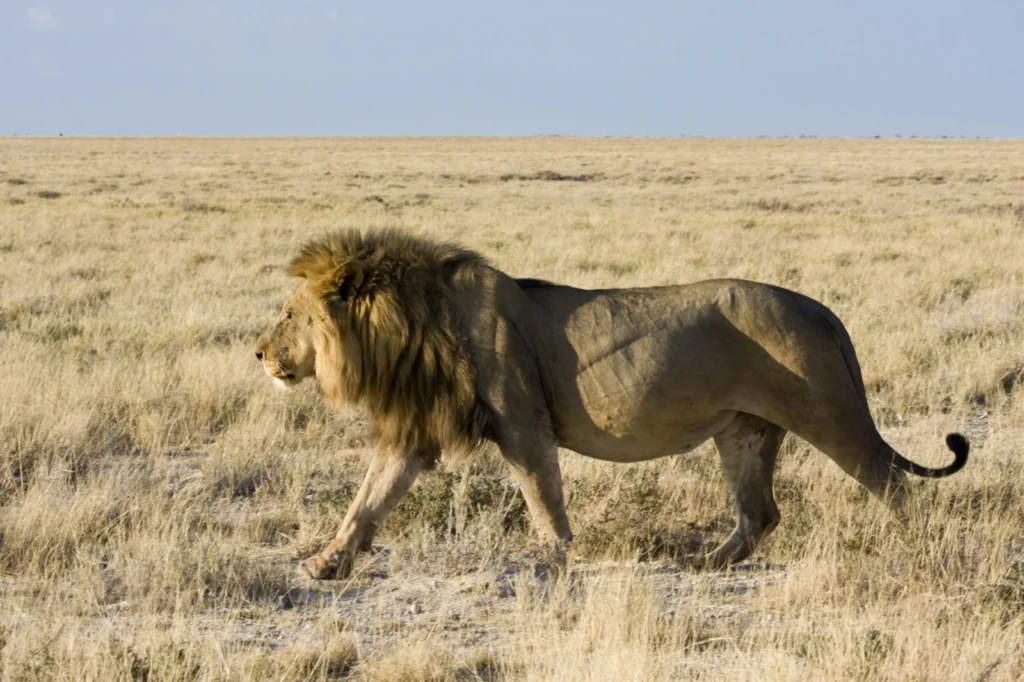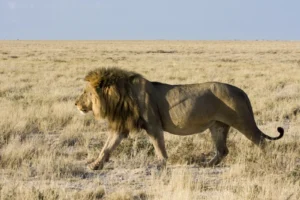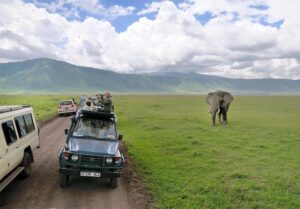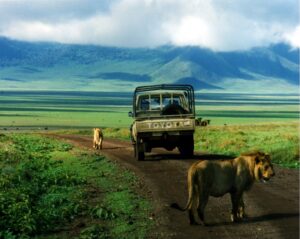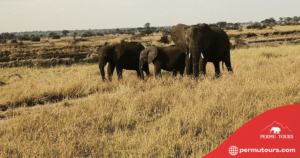How Much Does a Lion Weigh?
How Much Does a Lion Weigh? Discover the Facts About Lion Weight
Lions are among the most iconic and majestic creatures on our planet. Known as the “Kings of the Jungle,” these big cats have fascinated humans for centuries, symbolizing strength, courage, and nobility. But how much does a lion weigh? Understanding the weight of these magnificent animals is not just a matter of curiosity; it provides insights into their biology, behavior, and role in the ecosystem. In this comprehensive guide, we’ll explore the average weight of lions, factors influencing their weight, comparisons with other big cats, and much more.
The Basics: Understanding Lion Weight
1. Average Weight of Adult Lions
When discussing the weight of lions, it’s essential to differentiate between males and females. Adult male lions typically weigh between 330 to 550 pounds (150 to 250 kilograms), while females usually weigh around 265 to 400 pounds (120 to 180 kilograms). This weight difference is primarily due to sexual dimorphism, a common trait in many animal species where males and females exhibit different physical characteristics.
Male Lions
Male lions are larger and more muscular than their female counterparts, which plays a crucial role in their social structure and hunting strategies. Their larger size allows them to defend their pride and territory effectively. The weight of male lions can fluctuate based on various factors, including age, health, and environmental conditions.
Female Lions
Female lions, while smaller, are equally formidable. They are the primary hunters in the pride, using their agility and teamwork to take down prey. The weight of female lions can also vary significantly, influenced by factors such as pregnancy and lactation, which can cause temporary weight gain.
2. Factors Influencing Lion Weight
Several factors can influence how much a lion weighs, and understanding these factors can provide valuable insights into their biology and ecology.
Age
Age is one of the most significant factors affecting lion weight. Young lions grow rapidly and can gain substantial weight in their early years. By the time they reach maturity at around 3 to 4 years of age, their weight stabilizes. Older lions may experience weight loss due to health issues or decreased hunting efficiency.
Diet
A lion’s diet is critical in determining its weight. Lions are carnivorous predators that primarily hunt large herbivores such as wildebeest, zebras, and buffalo. The availability of prey in their habitat can significantly impact their weight. A well-fed lion will weigh more than one that struggles to find food. Additionally, during times of plenty, lions may consume more food, leading to increased weight.
Habitat
The environment in which lions live can also affect their weight. Lions in areas with abundant prey and favorable conditions tend to be heavier than those in regions where food is scarce. Habitat loss and changes in prey availability due to human activities can lead to weight fluctuations in lion populations.
Health and Genetics
Health issues can also influence a lion’s weight. Diseases, parasites, and injuries can lead to weight loss, while genetic factors may predispose certain lions to be larger or smaller than average. A lion’s overall health is a critical aspect of its ability to hunt and thrive in the wild.
3. The Life Cycle of Lions
Understanding the life cycle of lions provides context for their weight changes throughout different life stages.
Cub Stage
Lion cubs are born weighing about 3 to 4 pounds (1.5 to 2 kilograms). They are entirely dependent on their mothers for food and protection during this vulnerable stage. As they grow, cubs begin to eat solid food around 3 months of age, and their weight increases rapidly. By the time they reach 1 year, they can weigh between 50 to 100 pounds (22 to 45 kilograms).
Juvenile Stage
As they transition into the juvenile stage, lions continue to grow and develop their hunting skills. By the age of 2, male lions may weigh between 150 to 250 pounds (68 to 113 kilograms), while females may weigh around 100 to 180 pounds (45 to 82 kilograms). This is a critical period for learning and establishing social bonds within the pride.
Adulthood
Upon reaching adulthood at around 3 to 4 years, male lions can weigh between 330 to 550 pounds, while females range from 265 to 400 pounds. Adult lions are fully capable of hunting and defending their territory, and their weight reflects their physical prowess.
4. The Importance of Weight in Lion Behavior
The weight of lions plays a crucial role in their behavior and social structure.
Hunting Strategies
Weight influences a lion’s hunting strategy. Heavier lions may rely on strength to overpower prey, while lighter lions might use speed and agility. Female lions, who do most of the hunting, often work in groups to take down larger animals, showcasing the importance of teamwork and strategy.
Territorial Defense
Male lions use their weight and strength to defend their territory against rival males. A larger, heavier lion is often more intimidating and better equipped to fend off challengers. This physical dominance is essential for maintaining pride stability and ensuring the survival of their offspring.
5. Comparison with Other Big Cats
How does a lion’s weight compare to other big cats? Understanding these differences helps us appreciate the unique characteristics of each species.
Tigers
Tigers are generally heavier than lions. Male tigers can weigh between 400 to 600 pounds (180 to 272 kilograms), making them the largest of the big cats. Their weight allows them to take down larger prey, such as deer and wild boar. Unlike lions, tigers are solitary hunters, relying on stealth and strength.
Leopards
Leopards are significantly lighter than lions, with males weighing between 110 to 200 pounds (50 to 90 kilograms). Their smaller size allows them to be more agile climbers, enabling them to hunt in trees and evade larger predators. This adaptability is crucial for their survival in various habitats.
Cougars
Cougars, also known as mountain lions, weigh between 80 to 220 pounds (36 to 100 kilograms). They are solitary hunters like tigers and are known for their agility and strength. Cougars have a diverse diet, allowing them to thrive in different environments.
6. The Impact of Environment on Lion Weight
The environment plays a significant role in shaping lion populations and their weights.
Habitat Loss
Habitat loss due to human encroachment, agriculture, and urbanization has a profound impact on lion populations. As their natural habitats shrink, lions may struggle to find sufficient prey, leading to weight loss and decreased reproductive success.
Climate Change
Climate change poses another threat to lion habitats. Changes in temperature and precipitation patterns can affect the availability of prey and water sources. Lions may need to travel greater distances to find food, impacting their overall health and weight.
7. Conservation and the Future of Lions
Understanding lion weight and the factors that influence it is crucial for conservation efforts. As apex predators, lions play a vital role in maintaining the balance of their ecosystems.
Conservation Efforts
Various organizations are working to protect lion populations and their habitats. Conservation efforts focus on habitat restoration, anti-poaching initiatives, and community engagement to ensure sustainable coexistence between humans and wildlife.
The Role of Ecotourism
Ecotourism can also contribute to lion conservation by providing economic incentives for local communities to protect wildlife. By promoting responsible tourism, communities can benefit financially from preserving their natural resources.
8. Fascinating Facts About Lions
To wrap up our exploration of lion weight, here are some fascinating facts about these incredible animals:
- Social Structure: Lions are the only big cats that live in social groups called prides, typically consisting of related females, their offspring, and a few males.
- Roaring: A lion’s roar can be heard from up to 5 miles away and serves as a way to communicate with pride members and establish territory.
- Sleeping Habits: Lions are known for their lazy demeanor, sleeping up to 20 hours a day to conserve energy for hunting.
- Lifespan: In the wild, lions typically live for about 10 to 14 years, while those in captivity can live up to 20 years or more.
Conclusion
In conclusion, knowing how much a lion weighs helps us appreciate these incredible animals. Adult lions can weigh anywhere from 265 to 550 pounds, depending on various factors such as age, diet, and habitat. Understanding the weight of lions provides valuable insights into their behavior, ecology, and conservation needs. As we work to protect these majestic creatures, we ensure that future generations can admire and learn from them.
FAQ on the weight of lions
What is the average weight of adult lions in the wild?
The average weight of adult male lions in the wild is approximately 420 pounds (190 kilograms), while adult female lions typically weigh around 280 pounds (127 kilograms).
For example, in the Maasai Mara National Reserve in Kenya, adult male lions have been recorded weighing up to 500 pounds, while adult females have been observed weighing as much as 350 pounds.
How does a lion's weight change throughout its life cycle?
Lions, majestic creatures of the wild, exhibit a striking difference in size between males and females. This phenomenon, known as sexual dimorphism, is a distinctive characteristic of their species.
Early Life
- Tiny Tykes: Newborn cubs, barely larger than a loaf of bread, weigh around 2-3 kilograms. Their early days are spent nursing from their mother’s teats, a period of rapid growth and development.
- Growing Pains: From the tender age of 1 to 2 years, cubs continue their remarkable growth spurt. Their diet, once solely reliant on their mother’s milk, expands to encompass a variety of meat. This nutritional shift fuels their weight gain, propelling them to a respectable 40-60 kilograms.
Adulthood
- Mature Giants: As adulthood approaches, the sexual dimorphism becomes even more pronounced. Females reach a substantial weight of 120-180 kilograms, while males tower over them, attaining a formidable 170-230 kilograms. Their muscular frames and impressive manes contribute significantly to their larger stature.
Individual Variation
It’s worth noting that these weight ranges are mere approximations, and individual lions may deviate from the norm. Factors such as habitat, diet, and overall health can influence their weight trajectory.
What role does weight play in lion hunting strategies?
Weight plays a crucial role in lion hunting strategies.
- Overpowering Prey: Lions, especially males with their larger size and muscular build, can use their weight to physically overpower their prey. They can knock larger animals off their feet, pin them down, or crush their necks with sheer force.
- Group Hunting Advantage: While individual lions can be formidable, their hunting success often lies in teamwork. A pride of lions, working together, can use their combined weight and strength to bring down even the largest prey.
- Hunting Techniques: Lions often employ strategies that leverage their weight. For example, they may stalk prey from a vantage point and then use a sudden burst of speed and weight to surprise and overpower their target.
In essence, weight is a significant asset for lions in their hunting endeavors, enabling them to dominate their prey and ensure their survival.
Why is understanding lion weight important for conservation?
Understanding lion weight is crucial for conservation for several reasons:
- Health Assessment: Weight is a vital indicator of a lion’s overall health and nutritional status. Deviations from normal weight ranges can signal underlying health issues, such as malnutrition, disease, or stress. By monitoring weight, conservationists can identify potential problems early and intervene to ensure the well-being of lion populations.
- Habitat and Prey Availability: A lion’s weight can provide insights into the quality of its habitat and the availability of prey. If lions are underweight, it may indicate a scarcity of food resources or poor habitat conditions. This information can be used to inform conservation efforts, such as habitat restoration or prey population management.
- Predation Pressure: Changes in lion weight can also reflect predation pressure from other carnivores, such as hyenas or leopards. If lions are losing weight, it may be due to competition for food or increased predation risk. Understanding these factors can help conservationists implement strategies to mitigate threats to lion populations.
- Reproduction and Survival: A lion’s weight can influence its reproductive success and survival rate. Healthy, well-nourished lions are more likely to reproduce and raise offspring successfully. By monitoring weight, conservationists can assess the reproductive health of lion populations and identify factors that may be limiting their growth.
- Human-Wildlife Conflict: Understanding lion weight can also help mitigate human-wildlife conflict. If lions are underweight or struggling to find food, they may be more likely to prey on livestock or come into contact with humans. By addressing the underlying causes of weight loss, conservationists can reduce the risk of conflict and promote coexistence between lions and human communities.
In summary, monitoring lion weight is essential for effective conservation. By gaining insights into the health, nutrition, and overall well-being of lion populations, conservationists can develop targeted strategies to protect these magnificent creatures and ensure their survival for future generations.
What are some fascinating facts about lions related to their weight?
Fascinating Facts About Lions and Weight
- Sexual Dimorphism: Lions exhibit a striking difference in size between males and females, with males being significantly larger. This is due to the development of their manes, which are primarily composed of keratin, a protein also found in human hair.
- Mane Weight: A lion’s mane can weigh up to 20 pounds (9 kilograms), adding to their overall bulk. The size and thickness of a male’s mane are often linked to their social status and reproductive success.
- Hunting and Weight: A lion’s weight can influence its hunting strategies. Larger males may be able to overpower prey with sheer force, while females may rely more on stealth and teamwork.
- Weight Loss During Hunting: Lions can lose up to 15% of their body weight during a single hunt, especially when chasing down large prey.
- Weight Gain After Hunting: After a successful hunt, lions will often consume a large amount of meat, leading to a rapid increase in weight.
- Weight Variations: Lion weight can vary significantly depending on factors such as age, sex, habitat, prey availability, and overall health.
- Weight and Climate: Lions living in colder climates may have thicker manes and slightly heavier bodies to help them retain heat.
How does habitat loss affect lion weight?
Habitat loss has a significant negative impact on lion weight.
- Reduced Prey Availability: When lions lose their natural habitats, their access to prey species can be severely limited. This can lead to malnutrition and weight loss, as lions struggle to find sufficient food to meet their nutritional needs.
- Increased Competition: Habitat loss can also intensify competition for resources between lions and other predators. This can reduce the amount of prey available to each individual lion, leading to decreased food intake and weight loss.
- Stress and Disease: Habitat loss can increase stress levels in lions, as they may be forced to travel longer distances to find food or face threats from humans. Chronic stress can negatively impact their health, leading to weight loss and increased susceptibility to diseases.
In summary, habitat loss can have a devastating effect on lion weight by limiting their access to food, increasing competition, and causing stress-related health problems. Conservation efforts that focus on protecting and restoring lion habitats are essential for ensuring the survival of these magnificent creatures.
What factors influence a lion's weight?
Factors Influencing a Lion’s Weight
Several factors can influence a lion’s weight:
- Age and Sex: As lions mature, their weight increases. Males typically grow larger than females due to the development of their manes.
- Habitat: Lions living in areas with abundant prey and suitable habitats tend to have healthier weights compared to those in resource-limited environments.
- Diet: A lion’s access to food, particularly meat, directly affects its weight. A diet rich in protein is essential for maintaining a healthy body mass.
- Health: Diseases, parasites, and injuries can impact a lion’s weight. Ill or injured lions may experience weight loss due to reduced appetite or difficulty hunting.
- Stress: Chronic stress, caused by factors such as human-wildlife conflict or habitat loss, can negatively affect a lion’s health and weight.
- Climate: Climate conditions can influence a lion’s weight. For example, lions living in colder climates may have thicker manes and slightly heavier bodies to help them retain heat.
These factors interact with each other to determine a lion’s overall weight and health. Understanding these influences is crucial for effective lion conservation efforts.
How do health and genetics influence a lion's weight?
Health and Genetics Influence on Lion Weight
Health:
- Disease and Parasites: Lions can be affected by various diseases and parasites that can lead to weight loss. For example, infections, internal parasites, and external parasites can reduce a lion’s appetite, hinder nutrient absorption, or cause chronic health issues that impact overall weight.
- Injuries: Injuries, such as broken bones or wounds, can limit a lion’s ability to hunt or access food, leading to weight loss.
- Nutritional Deficiencies: A lack of essential nutrients in the diet, such as protein, vitamins, or minerals, can impair a lion’s growth and development, resulting in underweight individuals.
Genetics:
- Hereditary Factors: Genetic factors can influence a lion’s body size and metabolism. Some lions may be genetically predisposed to larger or smaller body frames, which can affect their weight.
- Metabolic Rate: Individual lions may have different metabolic rates, which can influence how efficiently they burn calories. Lions with higher metabolic rates may require more food to maintain a healthy weight.
In conclusion, both health and genetics play significant roles in determining a lion’s weight. Understanding these factors is essential for effective conservation efforts, as they can help identify and address the underlying causes of weight loss in lion populations.
How does the weight of lions compare to other big cats?
Lion Weight Compared to Other Big Cats
Lions are generally among the heaviest of the big cats, although their weight can vary depending on factors such as sex, age, and habitat. Here’s a comparison with other big cats:
- Tigers: Tigers are the largest living cats and can often weigh more than lions. However, there are some individual lions that can exceed the weight of smaller tiger subspecies.
- Leopards: Leopards are significantly smaller than lions and tigers, with a maximum weight typically around 100 pounds (45 kilograms).
- Cheetahs: Cheetahs are the fastest land animals but are also among the smallest big cats. Their weight typically ranges from 40 to 70 pounds (18-32 kilograms).
- Jaguars: Jaguars are similar in size to leopards but can be slightly heavier. They are known for their powerful jaws and can take down prey much larger than themselves.
In general, lions are outweighed only by tigers, but their size can vary within the species. Factors such as habitat, prey availability, and individual genetics can influence a lion’s weight.

